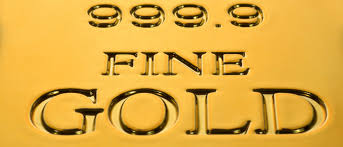All You Need To Know About Gold ETF (2)

Global overview
By 2006, there were five gold ETF products in the world, which were listed and traded in the United States, the United Kingdom, France, South Africa and other countries. As of September 14, 2006, gold ETFs held a total of 534.83 tons of physical gold assets, 17,195,086 oz.
Among the five gold ETFs, the StreetTracks Gold Trust Fund is certainly one of the The best of the best. The fund holds more than 70% of physical gold assets in all five gold ETFs.GLD is the largest gold ETF in U.S. history. One of the fastest-growing ETFs and the first ETF in the U.S. to have commodity-based assets. Since trading on November 18, 2004, GLD's share has ballooned to over $7.4 billion and has become the ninth largest U.S. ETF Fund. In 2006 alone, the Fund's assets grew by 70 per cent. According to Dow Global Advisory, in May 2006, the average daily trading volume of the GLD exceeded 12 million shares, and with the prevailing Gold The equivalent of $700 million/day at spot prices. 12 May 2006 was the most active trading day for GLD to date. The fund traded 20.6 million shares on the day for a turnover of $1.4 billion.
As an exchange-traded open-ended fund, the underlying asset of the Gold ETF is spot gold and is priced at the fund's share price of The movement in the price of spot gold, net of accruals, is intended to reflect changes in the price of spot gold. The Fund holds gold and may at any time exchange gold and Fund shares for a basket quantity. It is important to note that the gold ETF is a passive investment fund and it cannot hold or trade high-risk derivatives such as futures and Options, etc.
Regulatory body
Due to the characteristics of precious metal trading and custody, mainstream gold ETFs are organized in a trust model, with a fund structure consisting of three parties: the promoter, custodian and custodian, and the responsibilities of the three parties follow the fund contract.
There are usually two types of promoters of gold ETF funds, one is a company formed specifically to distribute funds, and this type of company mostly chooses to distribute funds in the World Well-known domiciles are set up to benefit from more favourable tax treatment and to avoid more stringent legal restrictions. GLD, for example, is sponsored by the World Gold Trust Service, which is wholly owned by the World Gold Council and is registered in the US Delaware. Second, large, well-known investment institutions, such as the issuer of the iShares COMEX Gold Trust (IAU) and iShares COMEX Silver Trust's Barclays Capital International, among others.
The custodian of the gold ETF has the authority to sell the gold assets held by the fund to pay for fund management expenses and to calculate the net asset value of the fund. and net asset value per fund share, etc. The custodian of the gold ETFs is a well-known international bank. GLD and IAU, for example, have the Bank of New York as custodian.
The Custodian of the Fund (Custodian) is responsible for the custody of the gold deposited by authorized investors in connection with the subscription of a basket of Fund shares. Each gold ETF has chosen a local London bank as its custodian. For example, the custodian of GLD is HSBC London vault, the custodian of SLV is JP Morgan London branch and so on.
To facilitate the operation of the fund, gold ETFs usually appoint a Marketing Agent as their Service. GLD funds are represented by US-based Dow Global Markets served.
Requisition redemption
Purchases and redemptions of Fund shares may only be made in the primary market by authorized investors in a basket quantity. In order to close the deal, the authorized investor must meet certain conditions. In the case of GLDs, for example, an authorized investor must be a registered broker-dealer or a securities market participant that is not required to register as a broker-dealer. such as banks or other financial institutions. You must also be a member of the American Depository Trust Company. Prior to subscriptions and redemptions, the Authorized Investor is also required to establish an Authorized Investor Unreserved Account (APUA) with the Fund Custodian or a Member Non-reserved bullion accounts (PUBA). auba accounts can only be used to transact with the fund.



